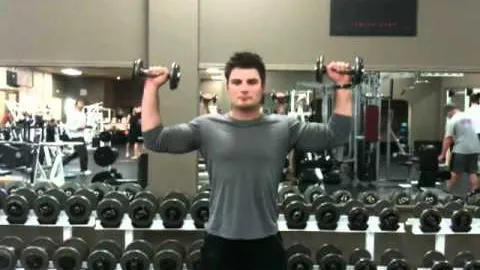
Are you looking to strengthen your shoulder muscles? The dumbbell standing external rotation exercise is a great option that targets the muscles surrounding your shoulder joint. In this comprehensive guide, we will walk you through the proper technique, benefits, and variations of this exercise. Whether you are a beginner or an advanced lifter, adding dumbbell standing external rotation to your workout routine can help improve your shoulder stability and prevent injuries.
The dumbbell standing external rotation exercise specifically targets the external rotators of the shoulder – the muscles responsible for outward rotation of the arm. By performing this exercise, you can strengthen the muscles in your rotator cuff, which play a crucial role in stabilizing the shoulder joint.
To ensure that you are performing the dumbbell standing external rotation exercise correctly and safely, keep the following tips in mind:
Incorporating the dumbbell standing external rotation exercise into your fitness routine offers several key benefits:
The primary benefit of this exercise is strengthening the rotator cuff muscles, specifically the external rotators. Strong rotator cuff muscles provide better stability to the shoulder joint, reducing the risk of injuries, such as impingement or dislocation.
By targeting the external rotators of the shoulder, this exercise helps enhance shoulder stability. Improved stability is important for athletes participating in sports that involve overhead movements, such as tennis or swimming.
Performing dumbbell standing external rotation can prevent muscle imbalances between the internal and external rotators of the shoulder. This imbalance is common in individuals who perform repetitive pushing movements, like bench presses, without incorporating an equal amount of pulling exercises.
If you've experienced a shoulder injury or undergone shoulder surgery, the dumbbell standing external rotation exercise is often recommended during the rehabilitation process. It helps to restore strength and stability to the injured shoulder.
To add variety to your shoulder workout and target different muscle fibers within the rotator cuff, you can try the following variations of the dumbbell standing external rotation exercise:
Lie face down on a flat bench, holding a dumbbell in one hand with your arm hanging down. Bend your elbow to a 90-degree angle and keep it at your side. Rotate your forearm outward, similar to the standing variation. This variation places more emphasis on the posterior deltoid and infraspinatus muscles.
Sit on a bench with your back straight and feet firmly planted on the ground. Hold a dumbbell in one hand and place your elbow on the inside of your thigh, so that your forearm is extended towards the ground. Then, rotate your forearm outward, maintaining the 90-degree angle at your elbow. This variation targets the infraspinatus and teres minor muscles.
The dumbbell standing external rotation exercise is an effective way to strengthen your shoulder muscles and improve stability in the shoulder joint. By incorporating this exercise into your routine, you can prevent injuries, enhance performance in overhead sports, and correct muscle imbalances. Remember to perform the exercise with proper form and gradually increase the weight as your strength improves. So, grab a dumbbell and give your shoulders the workout they deserve!
If you're looking for a gym, fitness club or yoga studio, you've come to the right place.
You can find information about gyms in your area. Browse catalog of gyms and find gyms with classes which are you looking for.
On gym page you can find simple information like address, phone or website. You can find list of available classes. You can check availability of personal training or small group classes. On place page you can also see information about open hours.
You can find gyms near you with amenities, courts, studios and equipments.
Use our map to find gym at your city or district.
In Gym Navigator you can find list of exercises with movies for many body parts.
You can browse exercises catalog and find exercises the best of you.
You can also find exercises grouped into workout plans, which you can use to improve you body. Each routine show you exercises one by one and give you possibility to count you progress and count down rest time.